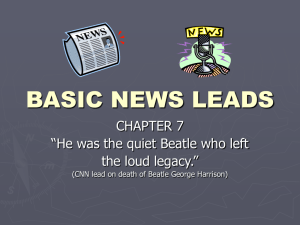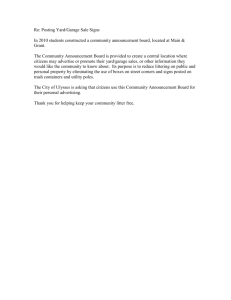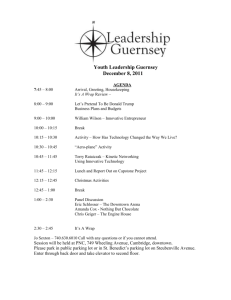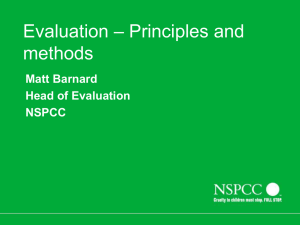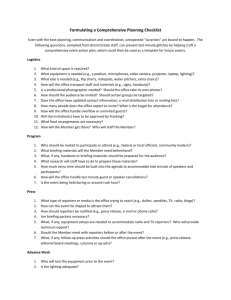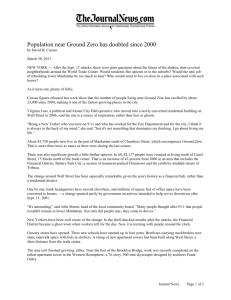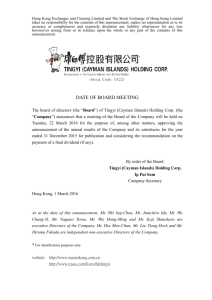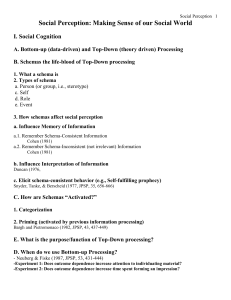Chapter 4, Writing Short News Reports and Leads
advertisement
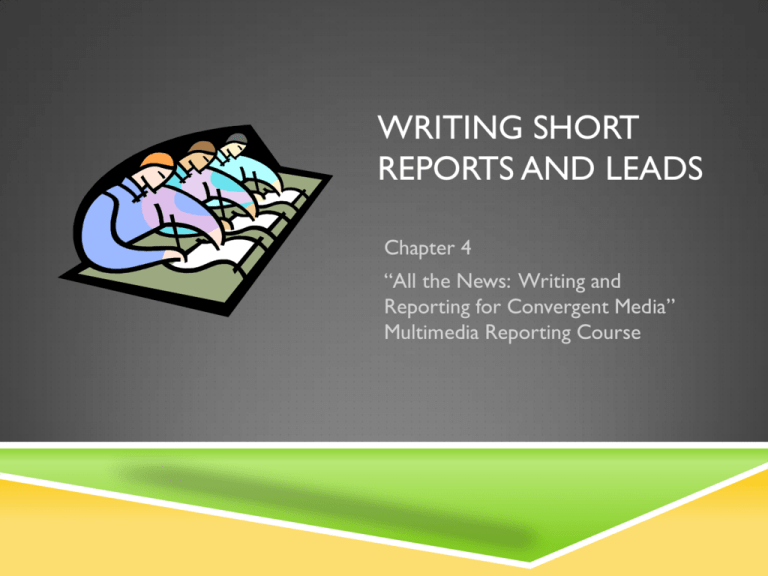
WRITING SHORT REPORTS AND LEADS Chapter 4 “All the News: Writing and Reporting for Convergent Media” Multimedia Reporting Course FINDING THE HEART OF THE STORY Once you understand the process of deciding what news is, you are ready to move to the next step: Extracting the heart of a news story from what often resembles a jumble of facts A news story is typically based on one of these situations: Someone does or says something of interest or importance Something important happens to a person, place or thing No matter how simple or complex the story, your goal is the same: To isolate the heart of the story And present it simply and clearly to your audience Look for the most important or interesting aspect of the news CUT TO THE CHASE Filter out unimportant details and events and cut to the chase A good first step in cutting to the chase is examine your facts for answers to the “5Ws and H” of journalism: Who made the statement, performed the action or was the object of the action? What happened or was said? When did the event or announcement take place? Where did the event or announcement occur? Why did the event or announcement happen? How did the event or announcement happen? SHINE A SPOTLIGHT Answering the 5 Ws and H questions will help you focus the story and shine a spotlight on the most newsworthy aspect(s) Think about “newsworthiness” in the context of this criteria (from Chapter 2): Timeliness, Impact, Prominence, Proximity/Localizing, Conflict/Controversy, Unusualness/Singularity, Human Interest, Affinity Let’s break down the bank robbery story on pages 246-7 this way: Who: Man robs a bank; teller turns over money after threatened What: Bank robbery When: This morning 8:30 when the bank opened for the day Where: First Federal Bank at the corner of Calhoun and Meeting streets Why: Money! How: Guy came in, gave teller a note, showed her his gun, got the cash, then went outside to a car where his accomplice was behind the wheel and they drove away PRESENTING THE STORY Once you’ve extracted the essential facts, the next step is to present them in an easily understood manner Write the lead (first sentence of the story)- most leads are hard news, basic, central point, summary leads that take the form of a simple declarative sentence Declarative sentences have this form: a subject, followed by a verb and an object (think who did what to whom?- see examples page 63) Four lead writing tips: Be specific as possible Avoid backing in, don’t “bury” the lead (the heart of the story) Be concise- watch word count, don’t cram everything into the lead Use active voice – Who/what committed the action first Example: A bearded bandit robbed the bank (active voice) Not this way: The bank was robbed by a bearded bandit (passive voice) PROBLEM LEADS People’s Names– don’t have to be in leads Delayed-Identification Leads: In many stories, the names of the main subjects are not as important as what those people did or what happened to them For these stories, reporters use leads that withhold complete identification of the people involved until the second or third paragraph Leads must be complete sentences: They are not headlines, so they must include all the necessary little words such as the words “a,” “an,” “the” Bad lead: Six college students arrested last night when police break up downtown party. (poor “headline” lead that is not a complete, grammatically correct sentence) Better lead: Six college students were arrested last night when police broke up a downtown party. COMMON ERRORS WITH LEADS Not beginning with the news—you should stress the news of the story, not the attribution Don’t “bury” the lead— chronological order rarely works in a news story—the lead should stress the central point, what’s most newsworthy, noteworthy or unique Avoid “agenda” leads—an opening paragraph that places too much emphasis on the time and place at which a story occurred is called an “agenda” lead. Example: Today C of C’s baseball team played a doubleheader against Clemson at Patriots Point. Better: At Patriots Point today, C of C’s baseball team swept a double-header from Clemson. Avoid “label” leads--“Label” leads mention a topic but fail to reveal what was said or done about the topic. Leads must report the substance of a story, not just its topic. Example: The Charleston City Council Tuesday night discussed ways of regulating underage drinking downtown. Better: The Charleston City Council Tuesday night examined several fake ID cards and approved new guidelines to help bar owners crack down on underage drinking downtown. IN LEADS, ALSO AVOID Lists- can be dull Exaggeration—if a Platitudes-- avoid story is weak, exaggeration is likely to make it weaker, not stronger Misleading- every lead must be accurate and truthful stating the obvious or stressing the routine in leads The negative- report what happened, not what failed to happen or what does not exist ELEMENTS OF GOOD LEADS Are specific—good leads contain interesting details and can help readers or viewers/listeners visualize the events they describe Use strong, active verbs—a strong word or descriptive verb can transform a routine lead into a dramatic one. Emphasize the magnitude of the story—stress the impact stories have on people Are objective and attribute opinions—reporters are expected to gather and convey facts to their readers, not to comment, interpret or advocate Reporters may anger or offend readers when they insert their own opinions Good leads have proper attribution IMPORTANCE OF ATTRIBUTION When it’s obvious where information has been obtained, you don’t have to provide a source Example: a store has burned to the ground, anyone can see that so it’s sufficient to write: “Fire has destroyed one of the city’s oldest department stores.” When the source of the information is not so obvious or is an opinion (such as that arson caused that store fire), you have to include the source of the information, you have to cite your source Provide attribution when: A statement is opinion, controversial, could be challenged or disputed, is especially colorful, provocative and/or debatable When in doubt…attribute!
